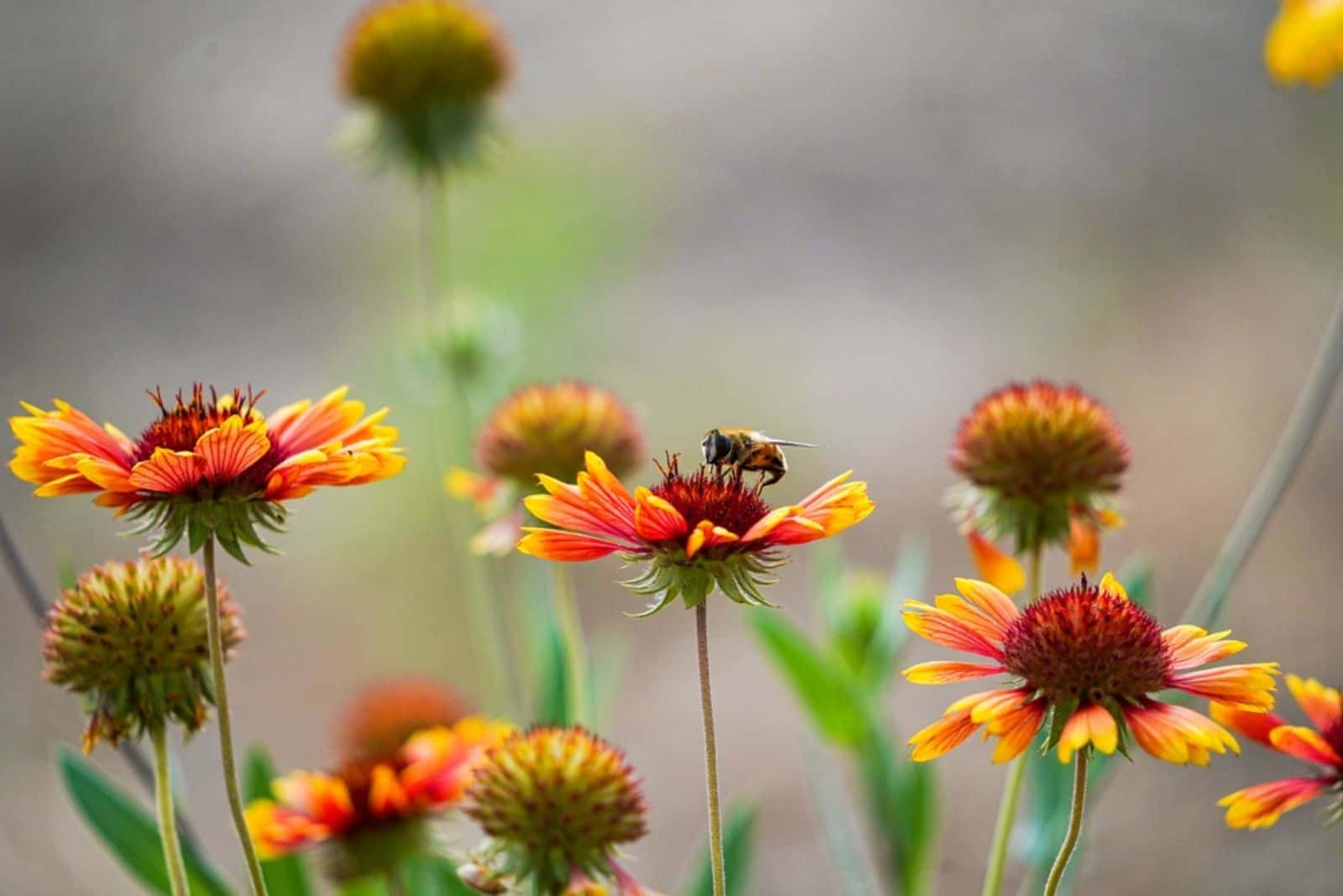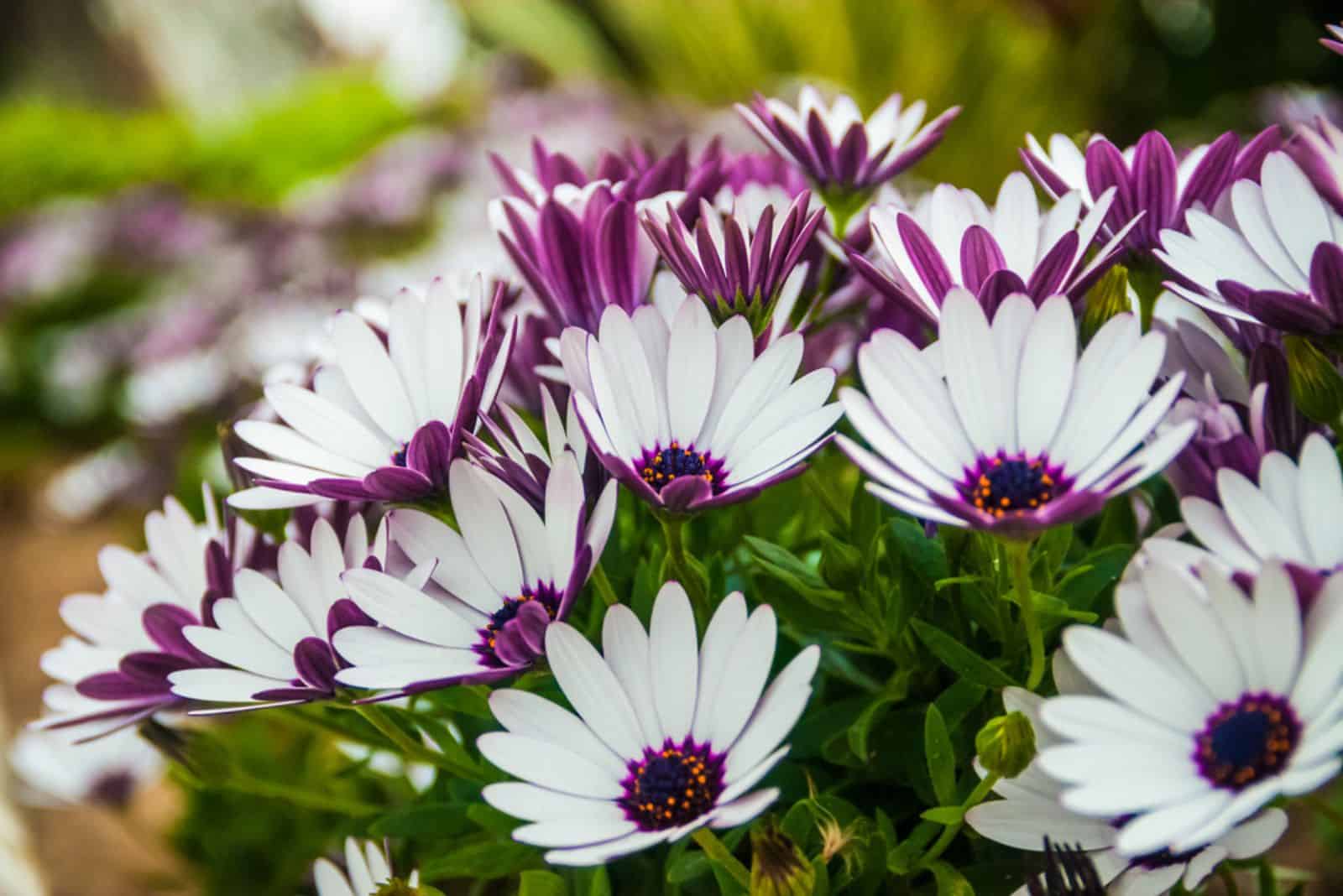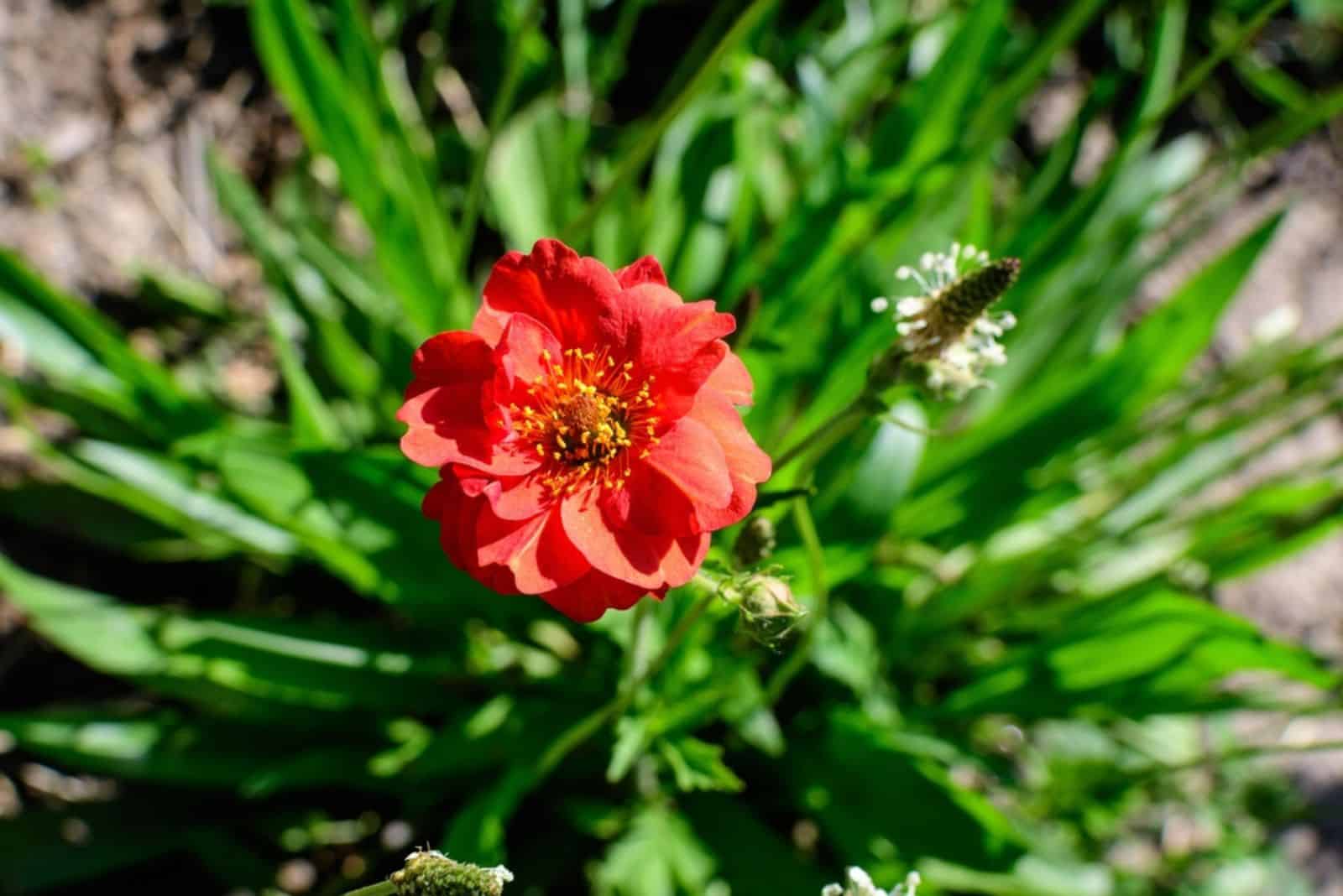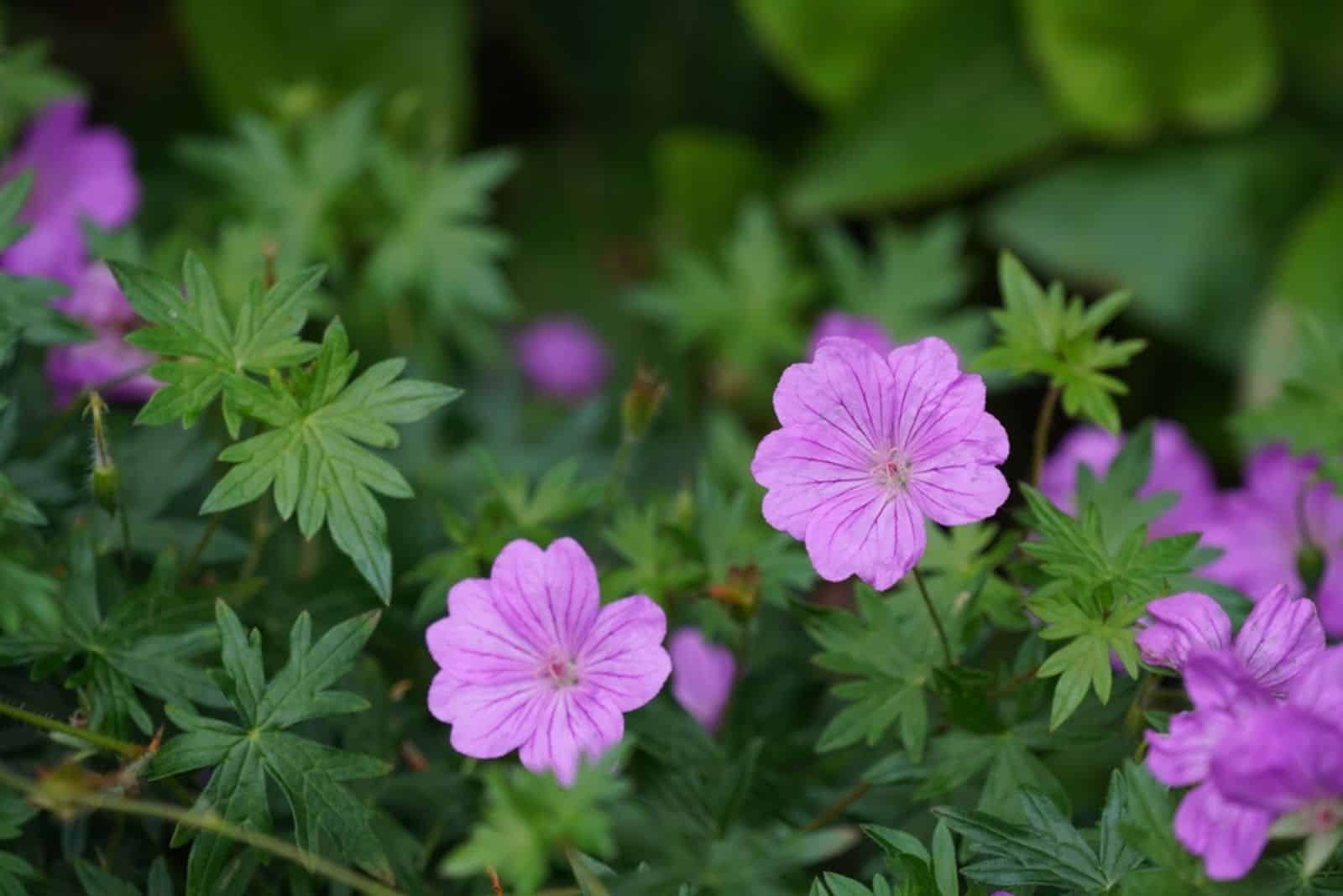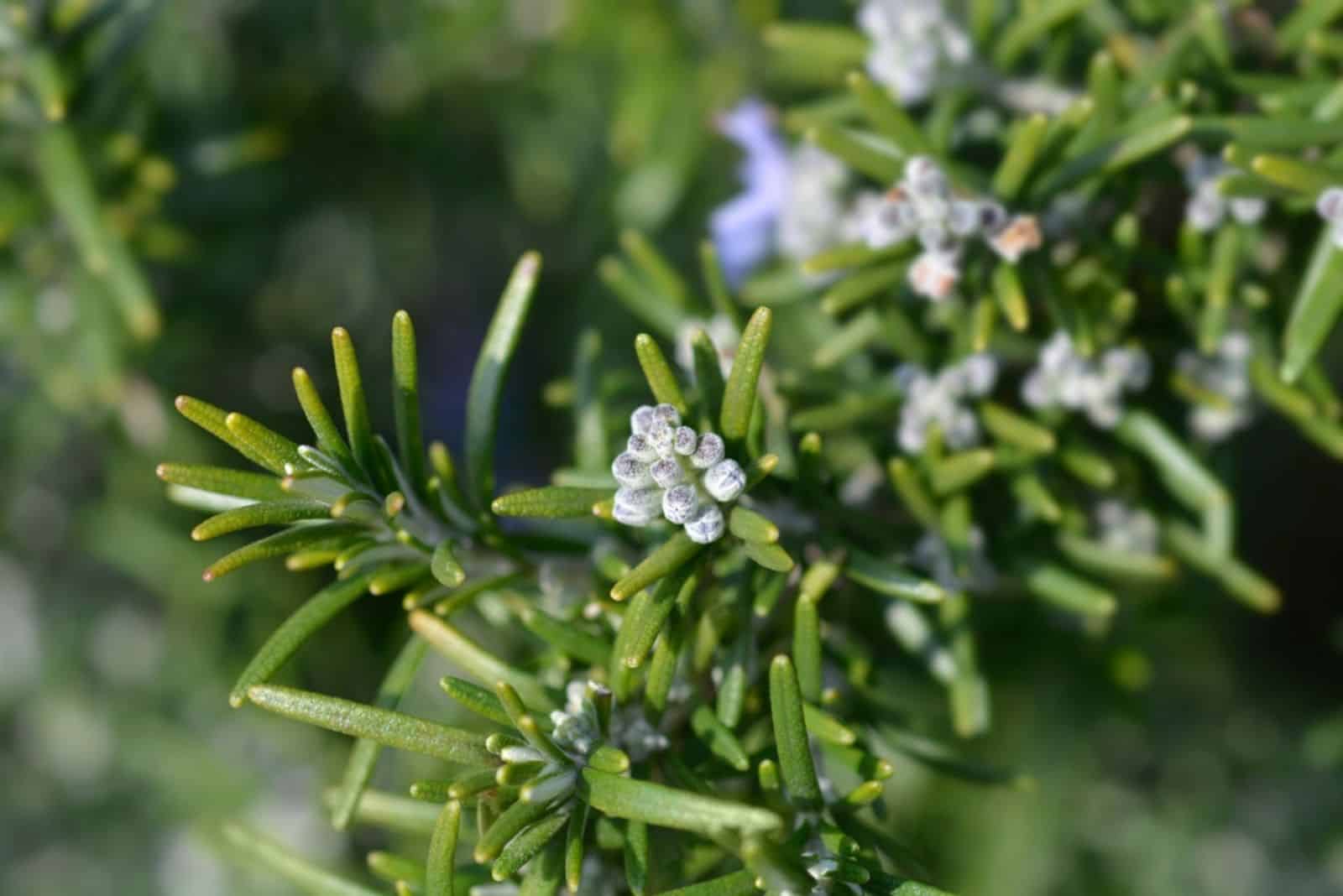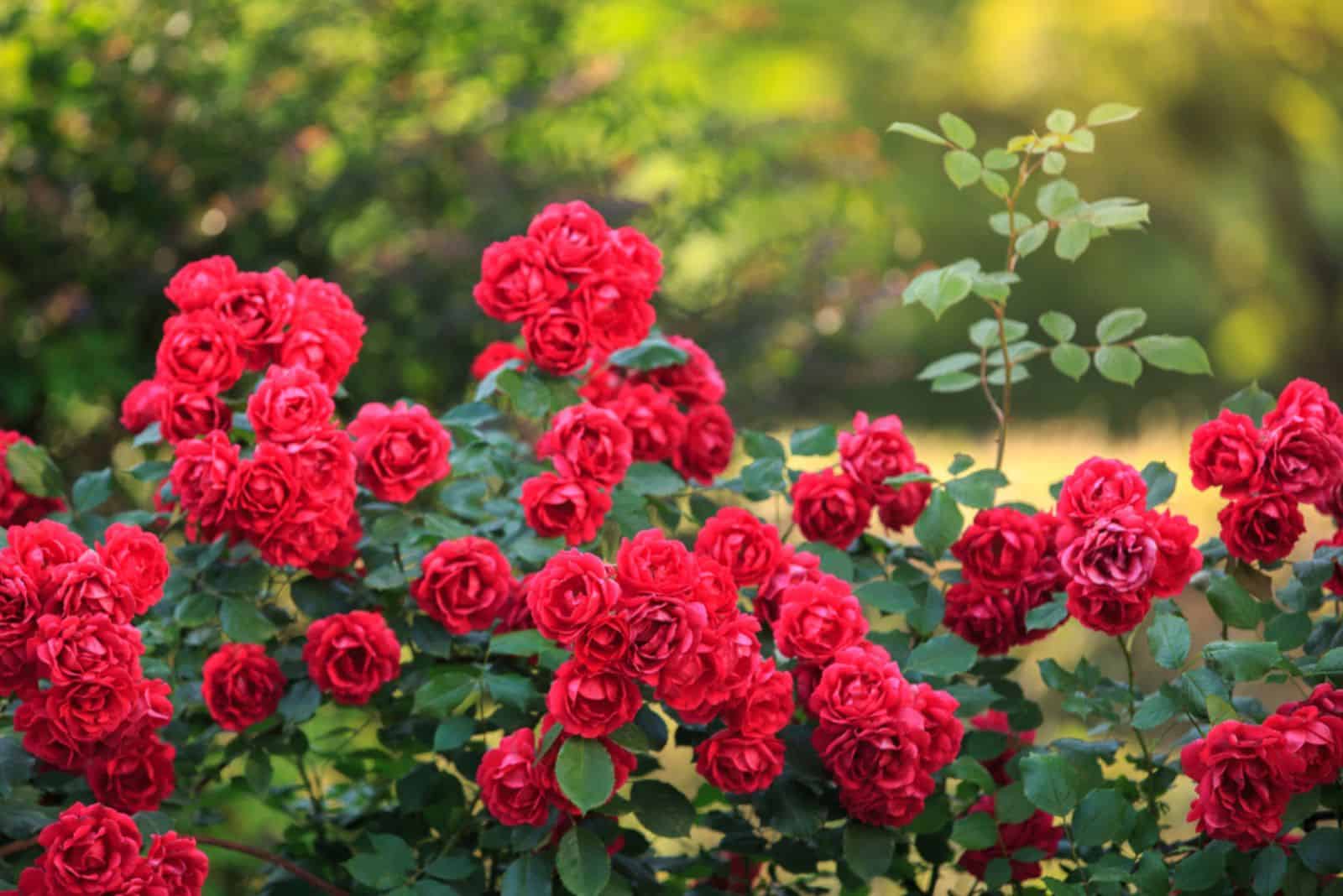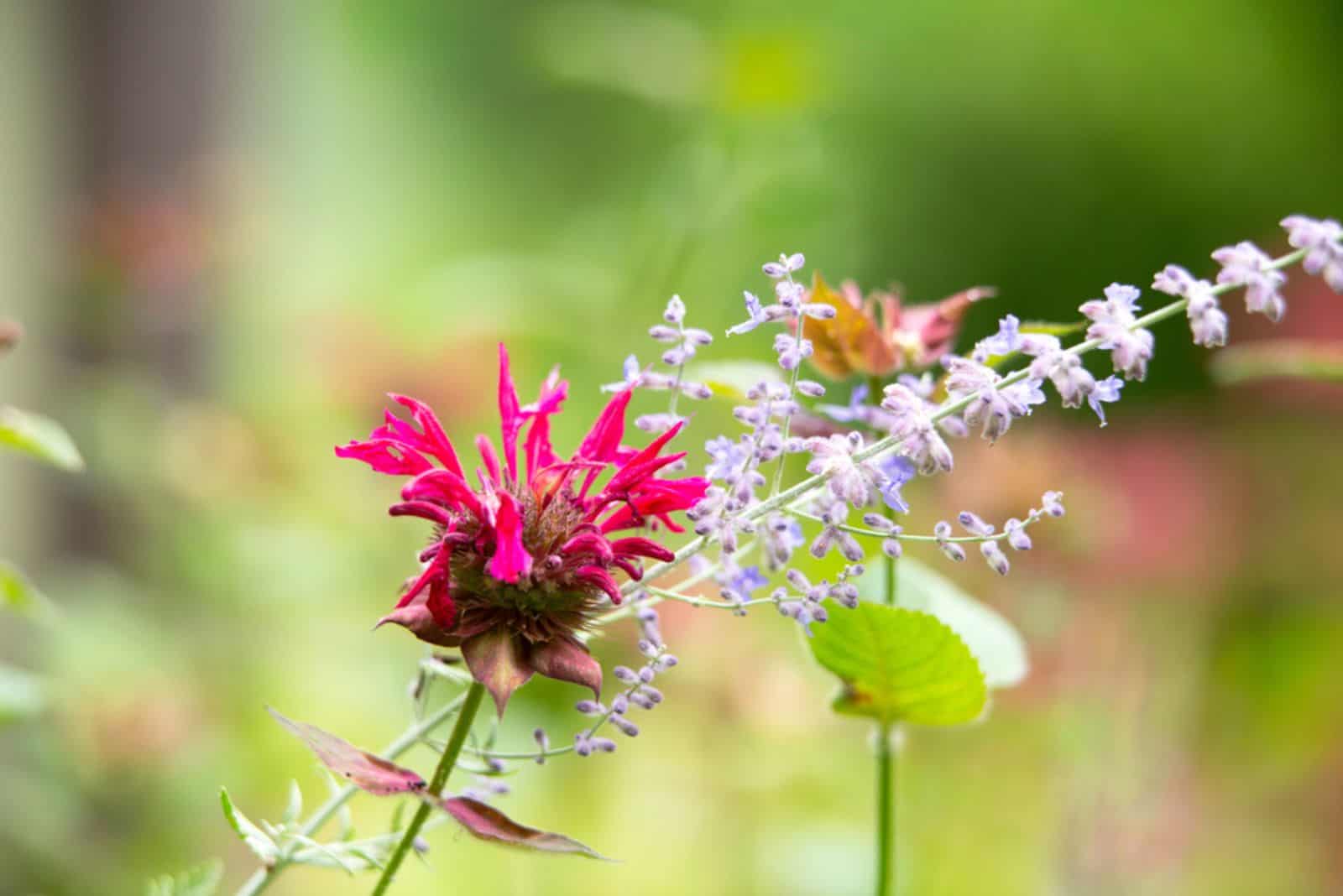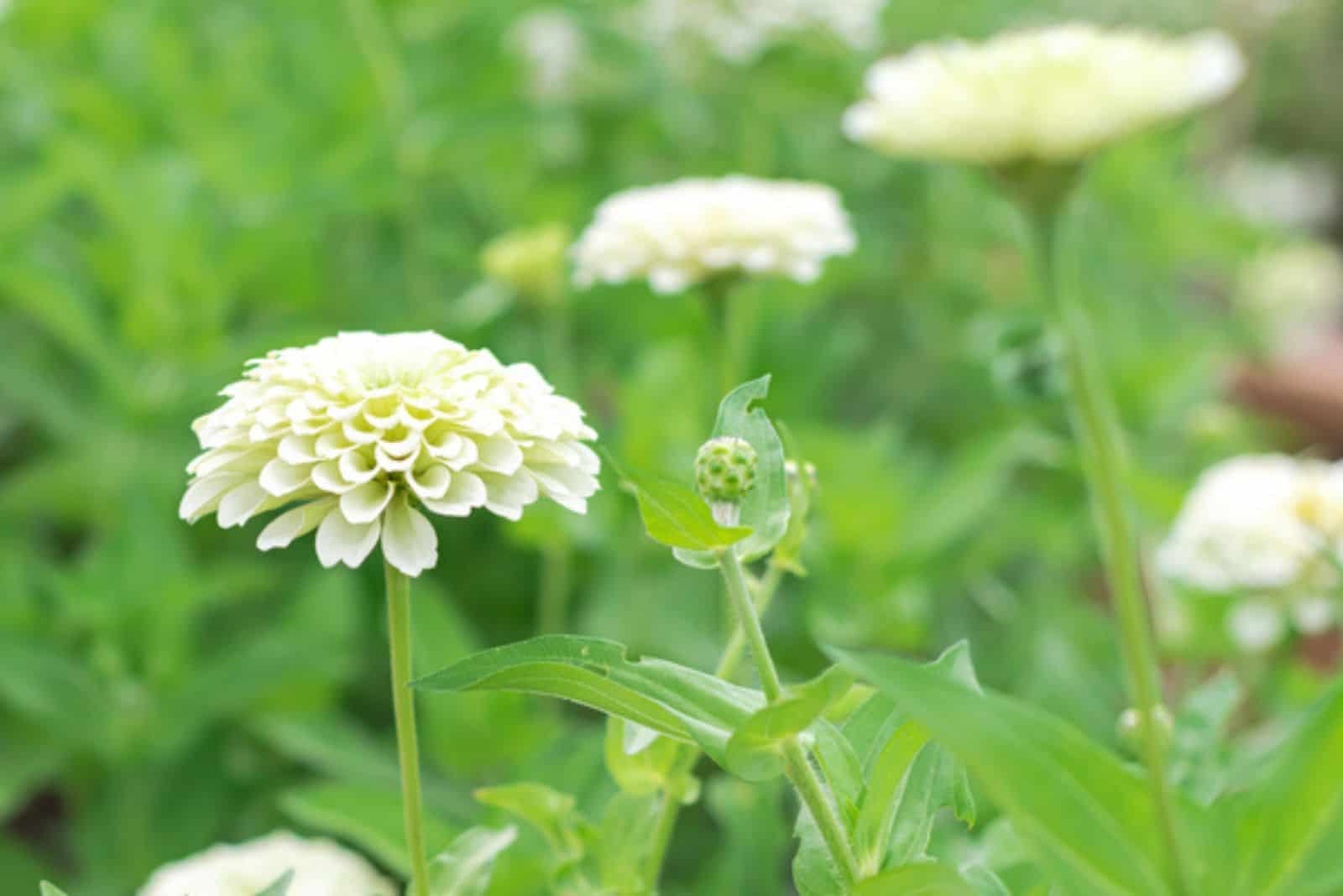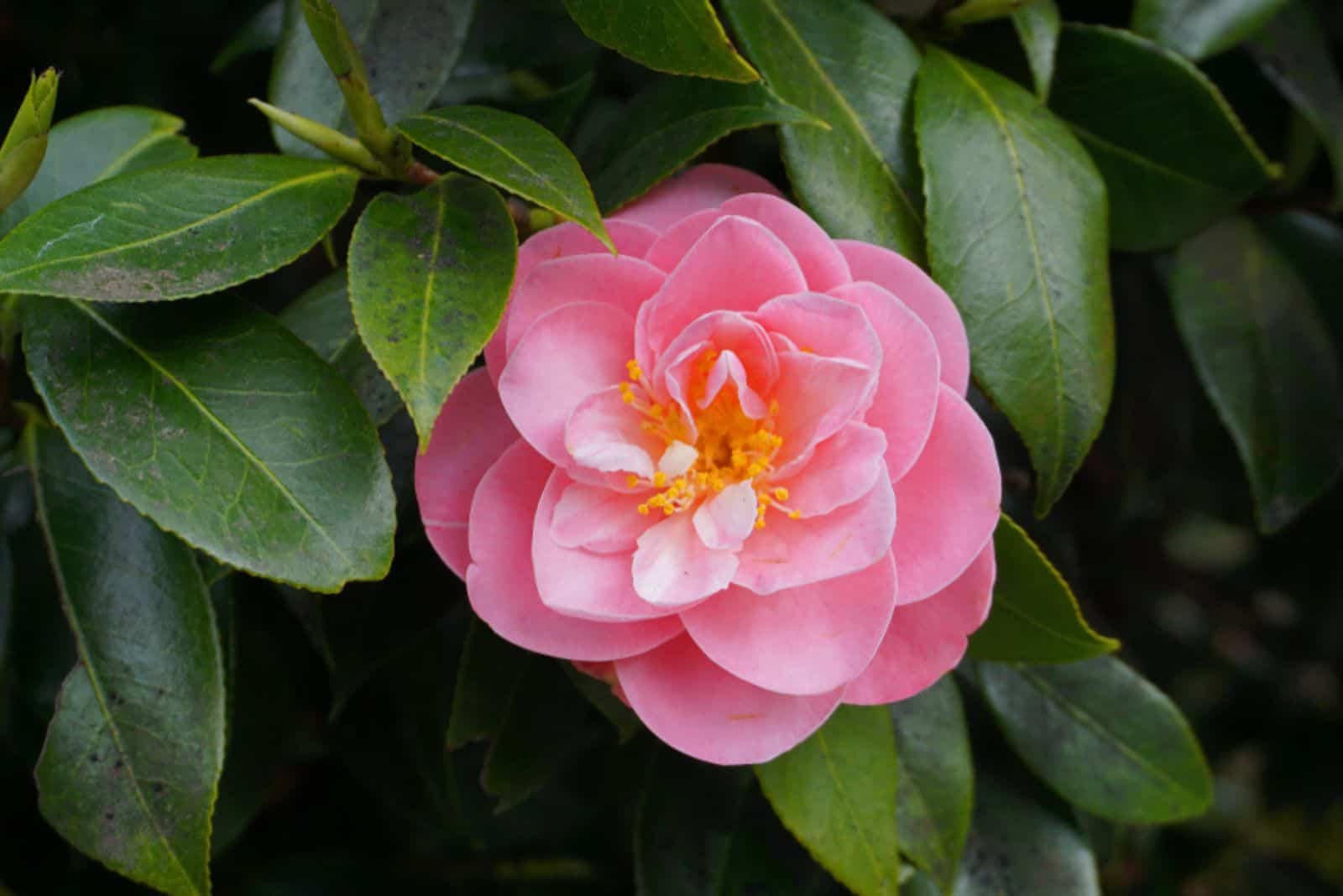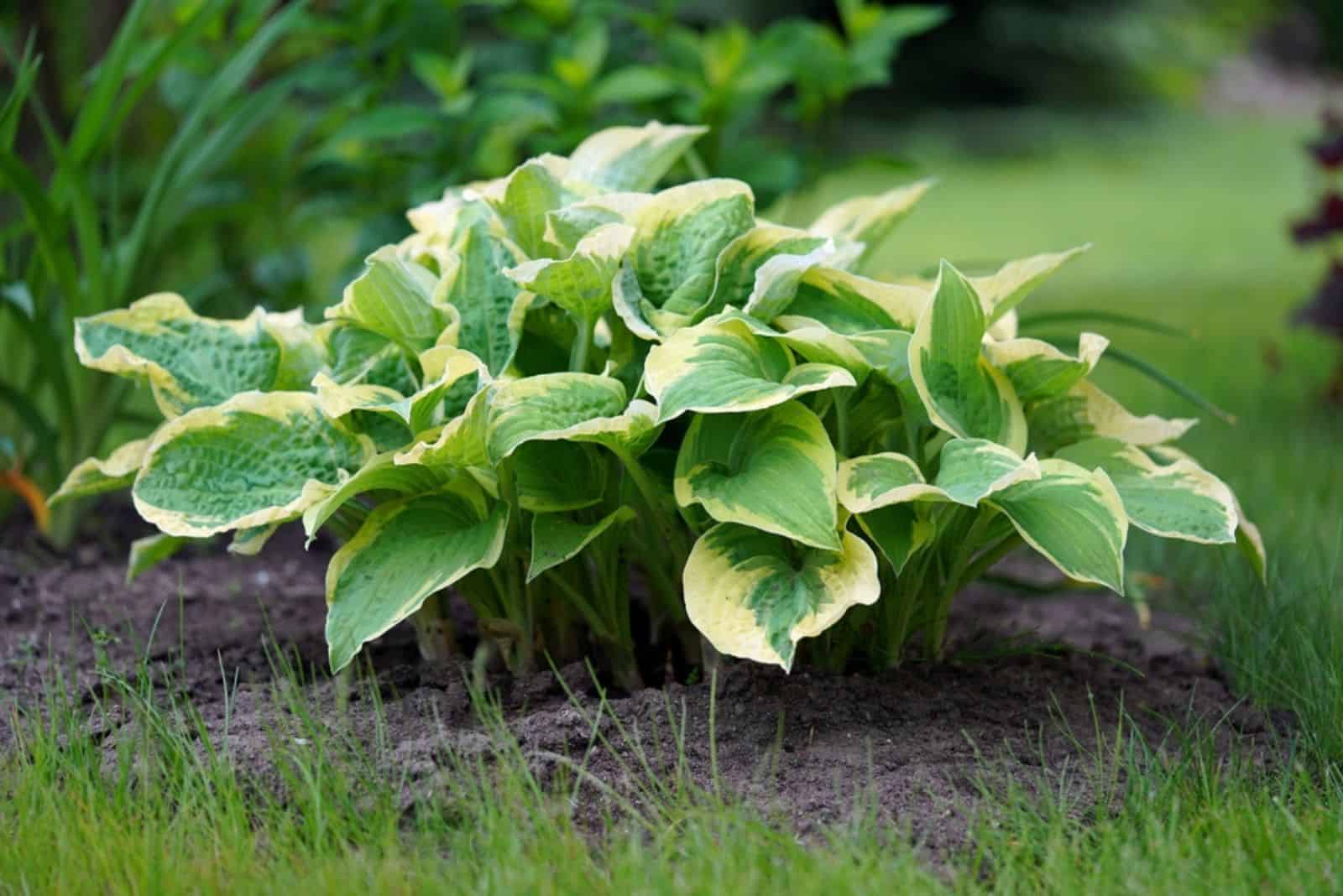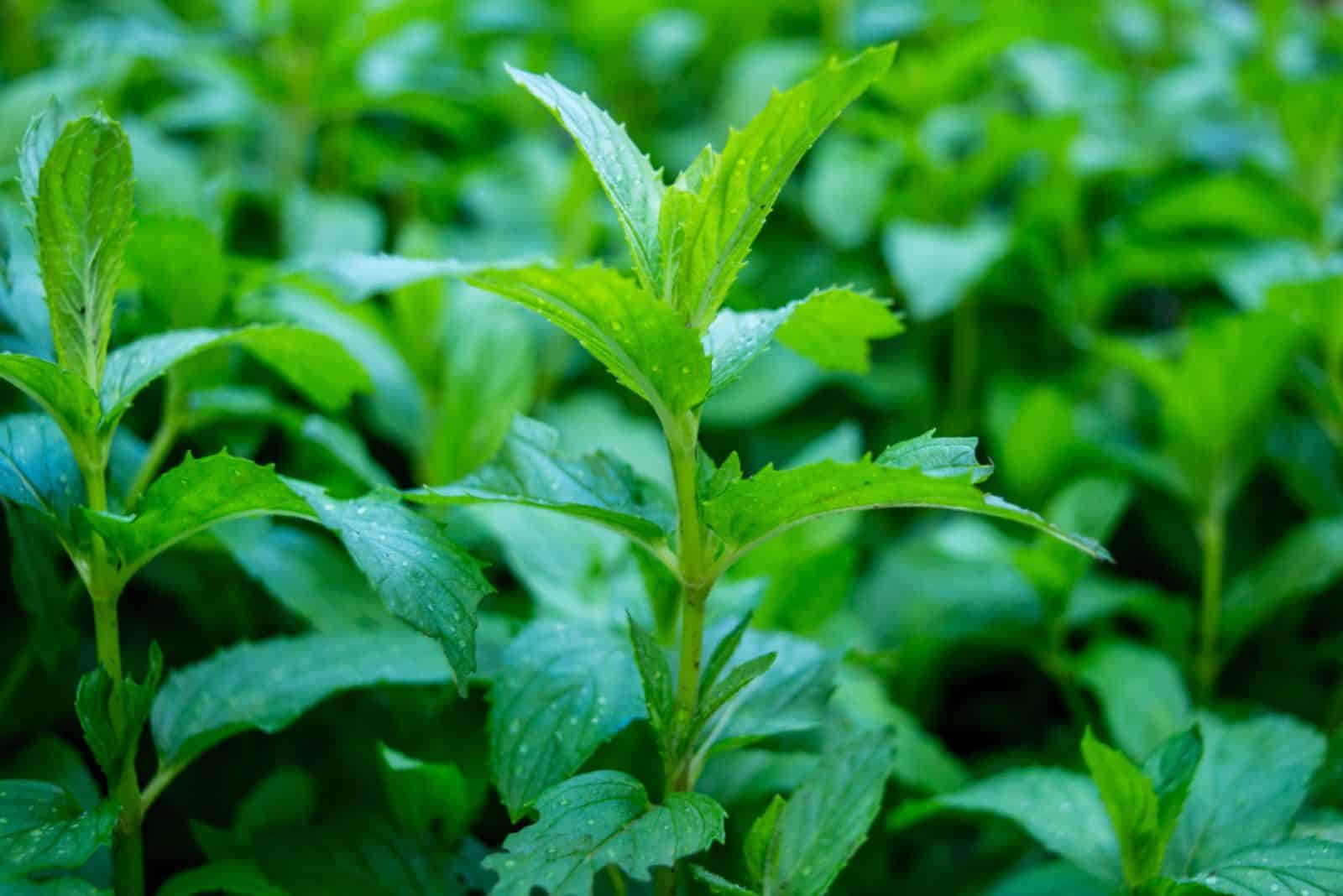Lavender is already perfect on its own, but you can provide it with some company to reap the benefits of companion planting.
The exquisite fragrance of lavender will keep pests away from their growing buddies, while their flower spikes will attract numerous beneficial insects.
They also look amazing paired with other flowers, so let’s explore what you can grow with lavender and what you should avoid planting nearby.
7 First-Rate Companions Plants For Lavender
Lavender is a drought-tolerant plant that grows best in nutrient-poor soils, so you should choose companions that have similar requirements.
Here are just a few!
1. African Daisies
The vibrant colors of African daisies pair well with any lavender variety. They make for excellent companions because of their similar growing requirements.
Both plants thrive in USDA zones 9-11, full sun, and well-draining soils.
These plants also have overlapping blooming times, so they’ll add more visual interest to your garden and attract numerous pollinators along the way.
Choose complementary colors, and your garden will buzz and burst with life.
Finally, daisy flowers contrast well with the narrow lavender foliage, adding more appeal to your garden.
Pro tip: Combine these plants in an alternating pattern with Shasta daisies for a beautiful snow-white contrast.
2. Blanket Flower
These beauties are another variety that resemble daisies. Interplanting them with lavender will not only create breathtaking visual appeal, but also attract many pollinators, hoverflies, and ladybugs.
Blanket flowers need full sun and well-draining soils, so you won’t have any issues growing them close to your lavender.
They bloom throughout summer and fall, and will complement your white lavender varieties perfectly.
Intermingling lavender and blanket flowers throughout the planting area will create an attractive display of contrasting colors and textures.
Pro tip: Space these plants about 12-18 inches apart so that they have enough room to grow and proper air circulation.
3. Purple Coneflower
Lavender and coneflowers make an excellent pair, and not just because their purple shades look stunning!
Coneflowers can survive the hottest weather and are a perfect addition to your summer garden. The same goes for lavender, which is native to the Mediterranean!
They have the same requirements when it comes to sunshine and moisture, and will attract many pollinators.
Deer and rabbits don’t like either of these plants, so you can plant them as a border for your vegetable garden to keep these pests away.
Coneflowers will also self-seed, which is both a blessing and a curse. You won’t have to reseed them, but they can also overtake places other than the one you designated for them.
Pro tip: Consider the mature size of both plants when planting them. Both species need good airflow, so don’t forget to space them about 1-2 feet apart.
4. Rosemary
Both rosemary and lavender are native to the Mediterranean, so they thrive in similar conditions.
You can combine lavender with either upright or trailing rosemary as both species will add more interest to your landscape. Lavender is more compact, and both trailing and upright rosemary will complement it nicely.
These plants also look alike, although rosemary has darker forest-green foliage that adds a nice contrast to the silver lavender.
They’ll even deter deer and rabbits from your herb and vegetable gardens, so don’t miss out on this helpful combination.
Both have fragrant leaves and flowers you can use for cooking or to repel pests.
You can also grow both of these plants in pots and add them to your container garden. This will make them even easier to care for as you can just take them inside when it’s cold and you’ll know exactly when to water them (when the topsoil dries out).
Pro tip: Since both of these plants can take up quite a bit of space, make sure to plant them about 1-2 feet apart, depending on the variety.
5. Roses
Roses and lavender are a time-honored pair in an English garden style. And while you can grow various types, floribundas and shrub roses are particularly fond of lavender.
Neither of the plants requires plenty of water, so you won’t have to amend your schedule that much. Roses do require more fertile soils, but as long as the lavender has excellent drainage, they won’t mind this slight adjustment.
If you want a low-maintenance combo, try landscaping with ‘Knock Out’ roses.
Pro tip: Don’t plant lavender and roses too close together as the roses may need more moisture during hot and dry conditions (2-3 feet apart is perfect). The amount of moisture roses need could lead to mildew on your lavender.
6. Russian Sage
This combo is my all time favorite. You can grow lavender and Russian sage to create a scented hedge in your front yard.
These plants have similar growing conditions and even look similar, but if you want to tell Russian sage and lavender apart, just look at their growth habits. Russian sage, which is usually taller, branches laterally, while lavender doesn’t.
But it’s precisely these differences that make these plants grow so well together. They are also very fragrant, which is why they can repel various pests, while their long-lasting blossoms attract various pollinators.
Pro tip: Don’t forget to space these plants properly. About 1-2 feet is generally enough to provide enough air circulation and reduce the risk of fungal diseases caused by humidity.
7. Zinnias
If you’re looking for a low-maintenance companion plant for your lavender, then an annual zinnia is the right choice for you.
These plants can even thrive on neglect as all they need is a well-draining soil and plenty of sunshine; just like lavender.
Simply sprinkle some seeds, and they’ll quickly sprout and start attracting pest predators and pollinators.
Pro tip: Since these plants need their space, you can stagger them together to maximize the use of room you have.
3 Plants To Avoid Planting With Lavender
Unfortunately, not all plants are suitable companions for lavender because of their watering needs, invasiveness, or both.
1. Camellias
Growing lavender and camellias together is simply not possible as their needs differ so much.
Unlike the herb, camellias require rich and moist soil to thrive, so you’ll have to fertilize and water them much more frequently than your lavender.
Additionally, camellias grow best in dappled or full shade environments, which is completely different from lavender’s light needs.
2. Hostas
Hostas are amazing ground covers for landscaping around trees, with their blue-green or white-variegated foliage.
However, they thrive in shaded locations and would get serious sunburn if you planted them near your lavender.
3. Mint
I hate to disappoint you, but you won’t be able to grow lavender and mint in the same bed, whether you’re growing strawberry mint or any other variety.
These plants have astronomical differences when it comes to their watering needs, and one of them would surely die, either the lavender because of too much or mint for the lack of moisture.
Another reason why mint doesn’t pair well with other plants is because it can overtake the entire space by itself. That’s why it’s much better to plant it in a pot and place it wherever there’s plenty of sunlight, even near your lavender bed.
Lavender Growing Tips
Growing lavender is a piece of cake as this aromatic herb doesn’t require much of anything except sunlight.
Find a full-sun location to plant it in and make sure that the soil has excellent drainage as these plants don’t like to have wet roots.
When it comes to watering, you don’t have to overthink it that much. Irrigate it every 1-2 weeks, and it’ll be good to go.
Fertilization is also something you don’t have to do excessively. In fact, these plants thrive in low-to-moderately fertile soils, so you can simply amend your garden soil with some compost, and that’s about it when it comes to nutrients.
Now all that’s left is to prune 1/3 of your plant at the beginning or end of the growing season, and you’ll have a lavender growing and flowering for years to come.
While we’re on the subject of pruning, deadhead the spent flowers so you can have another flush.
Finally, lavender is an amazing aromatic that will bring many benefits to your garden and its companions. You’ll have much more pollinators, less pests, and an irresistible fragrance everywhere.
These companion plants for lavender will help you bring out the best out of each variety and make your garden a more colorful and lively place.
Until next time!

